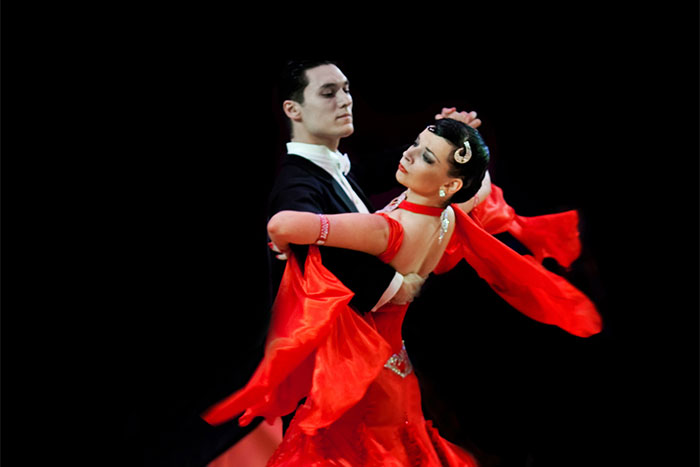The Tango
A newer style sometimes called tango nuevo or "new tango" has been popularized in recent years by a younger generation of dancers. The embrace is often quite open and very elastic, permitting the leader to initiate a great variety of very complex figures. This style is often associated with those who enjoy dancing to jazz- and techno-tinged, electronic and alternative music inspired in old tangos, in addition to traditional Tango compositions.
Tango nuevo is largely fueled by a fusion between tango music and electronica, though the style can be adapted to traditional tango and even non-tango songs. Gotan Project released its first tango fusion album in 2000, quickly following with La Revancha del Tango in 2001. Bajofondo Tango Club, a Rioplatense music band consisting of seven musicians from Argentina and Uruguay, released their first album in 2002. Tanghetto’s album Emigrante (electrotango) appeared in 2003 and was nominated for a Latin Grammy in 2004. These and other electronic tango fusion songs bring an element of revitalization to the tango dance, serving to attract a younger group of dancers.
Ballroom tango, divided in recent decades into the "International" (English) and "European" styles, has descended from the tango styles that developed when the tango first went abroad to Europe and North America. The dance was simplified, adapted to the preferences of conventional ballroom dancers, and incorporated into the repertoire used in International Ballroom dance competitions. English tango was first codified in October 1922, when it was proposed that it should only be danced to modern tunes, ideally at 30 bars per minute (I.e. 120 beats per minute – assuming a 4/4 measure).
Subsequently the English tango evolved mainly as a highly competitive dance, while the American tango evolved as an unjudged social dance with an emphasis on leading and following skills. This has led to some principal distinctions in basic technique and style. Nevertheless there are quite a few competitions held in the American style, and of course mutual borrowing of technique and dance patterns happens all the time.
Ballroom tangos use different music and styling from the tangos from the Rio de la Plata region (Uruguay and Argentina), with more staccato movements and the characteristic "head snaps". The head snaps are totally foreign to Argentine and Uruguayan tango, and were introduced in 1934 under the influence of a similar movement in the legs and feet of the tango from the Rio de la Plata, and the theatrical movements of thepasodoble. This style became very popular in Germany and was soon introduced to England, one of the first proponents being Mr Camp. The movements were very popular with spectators, but not with competition judges.
